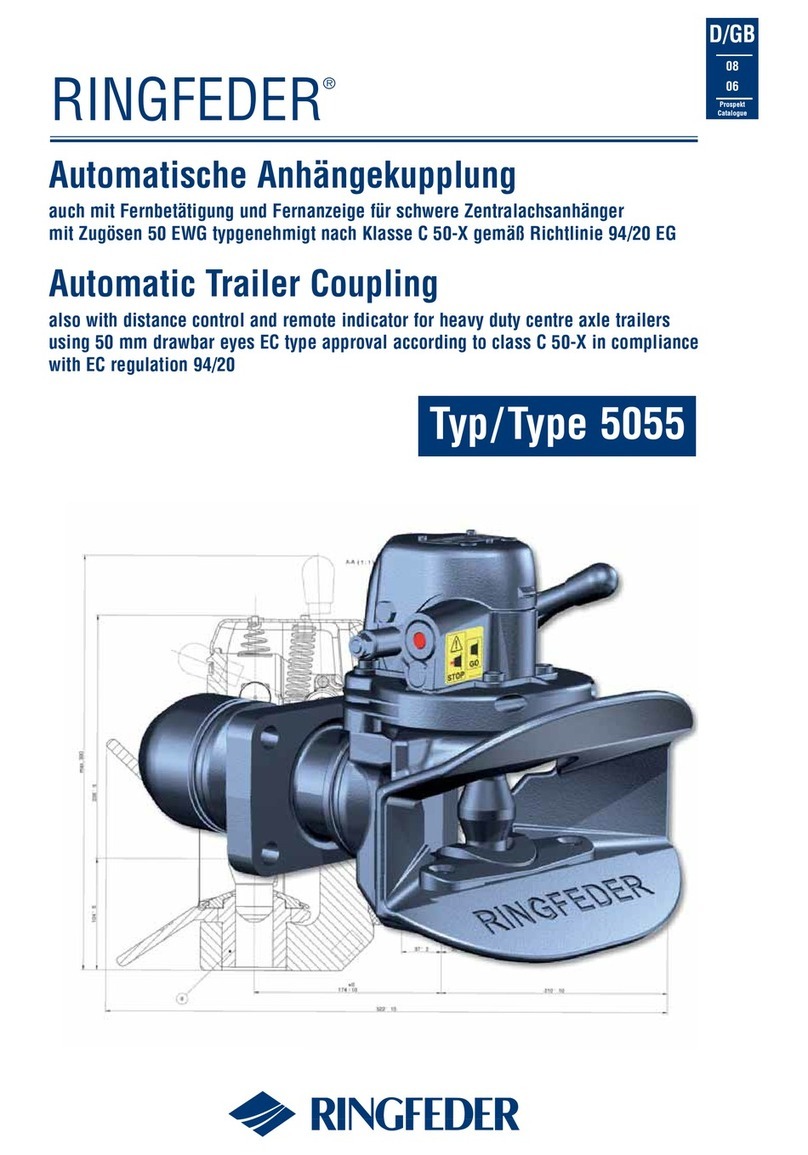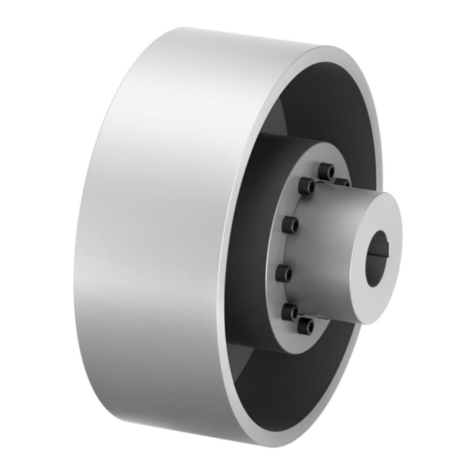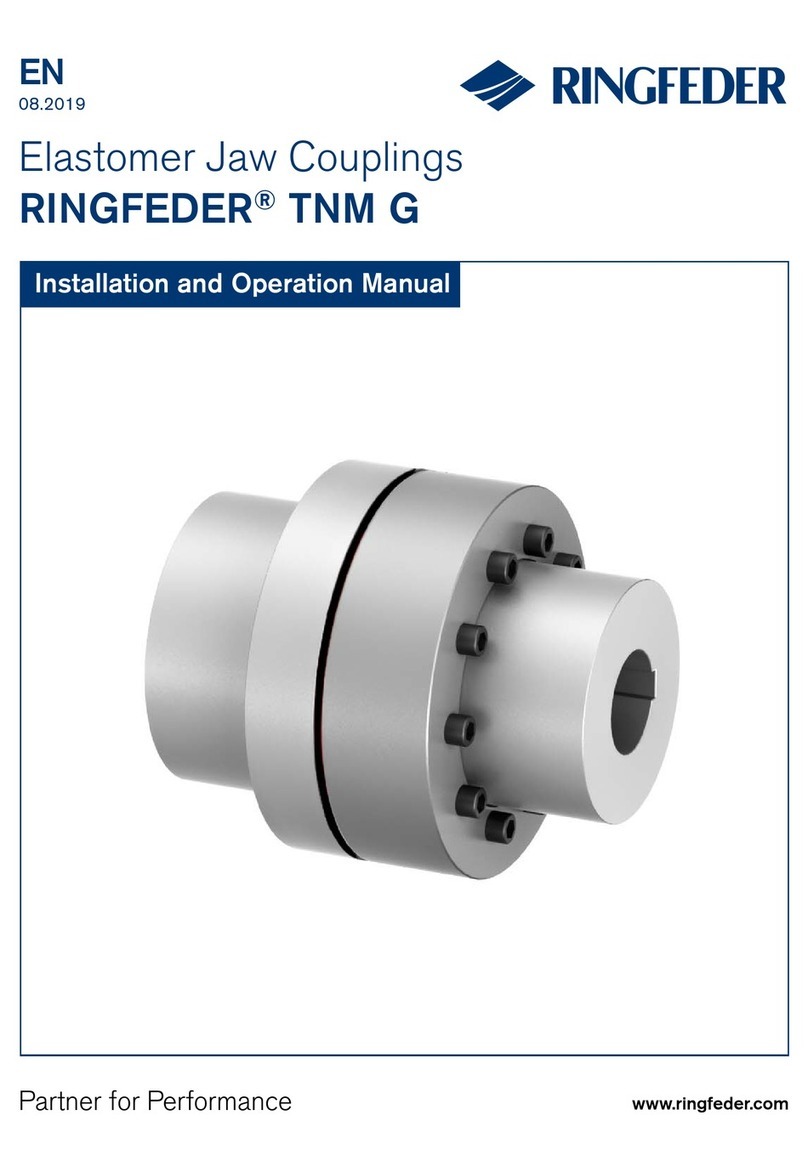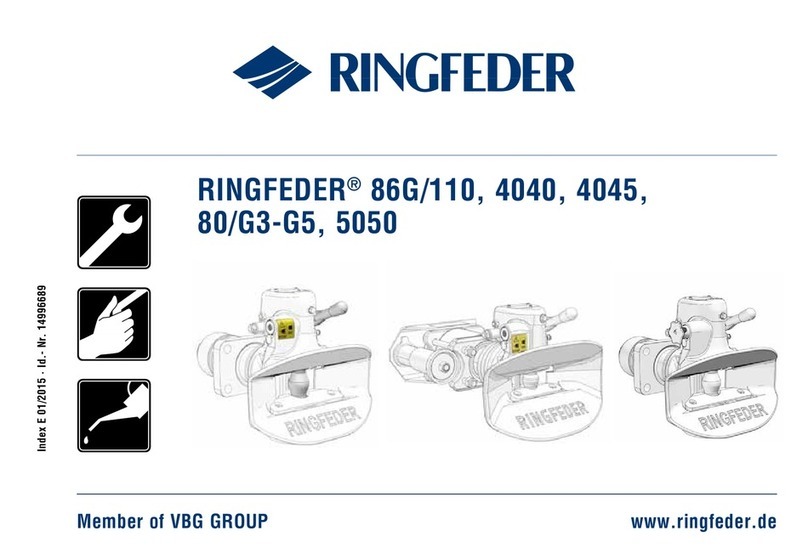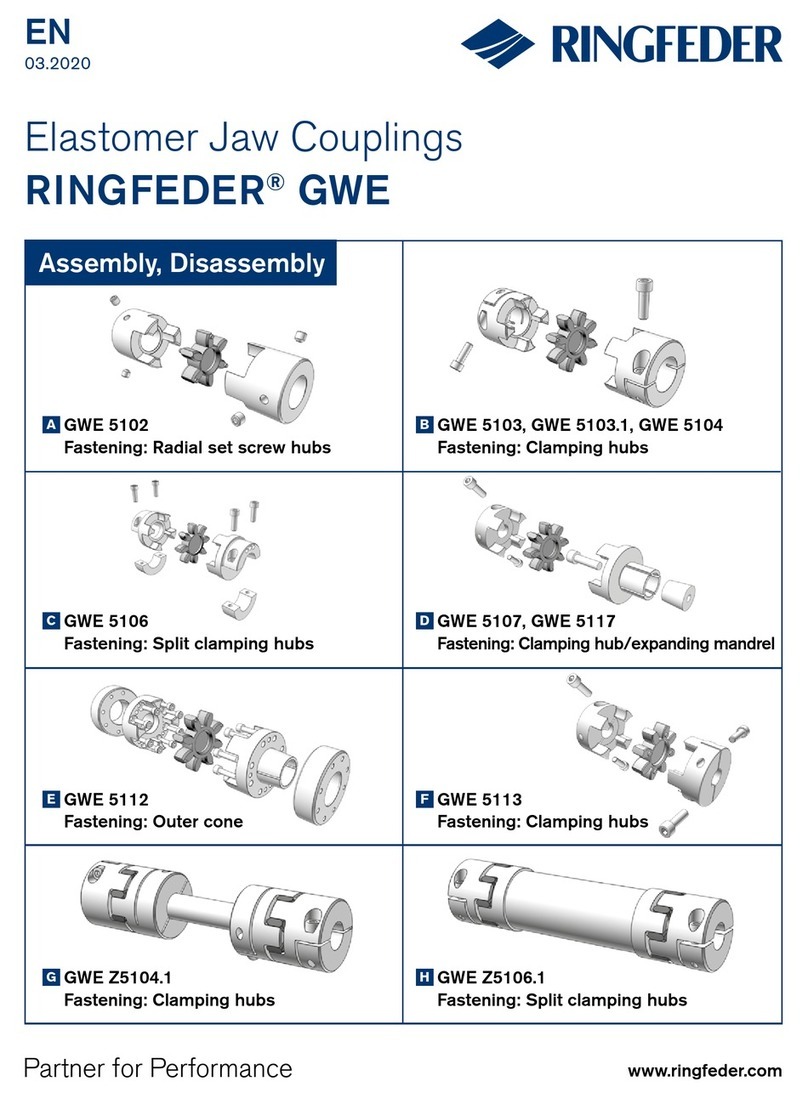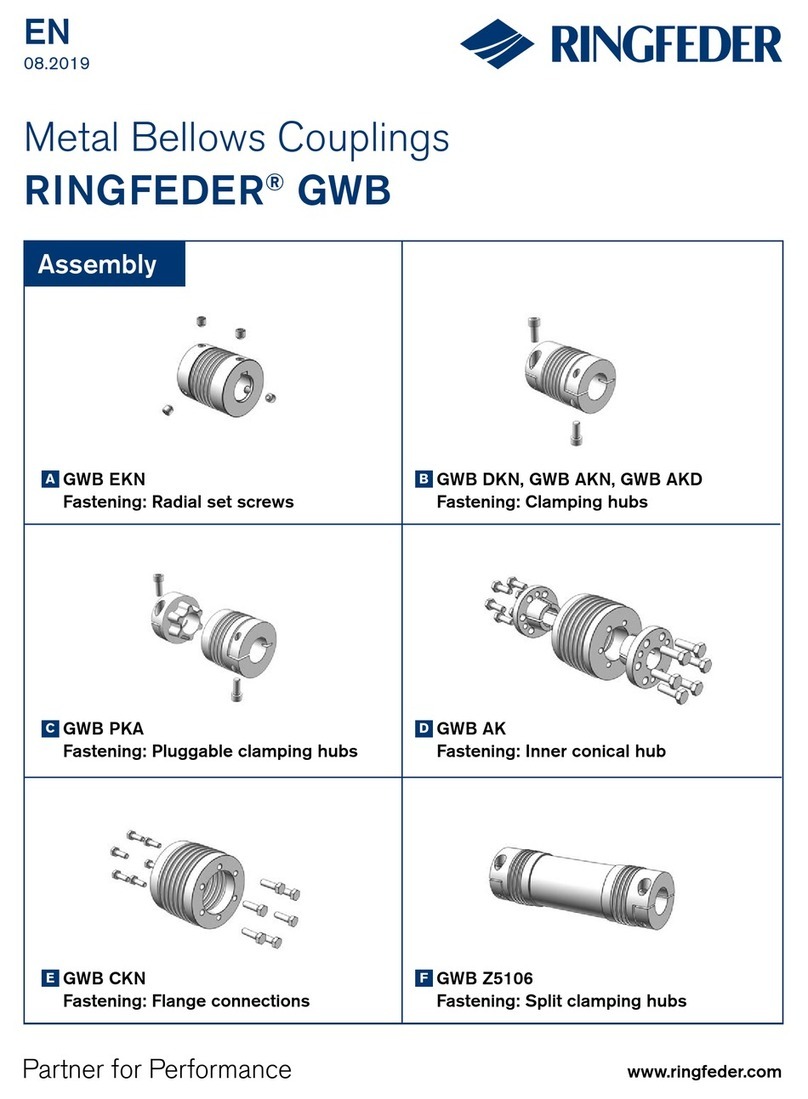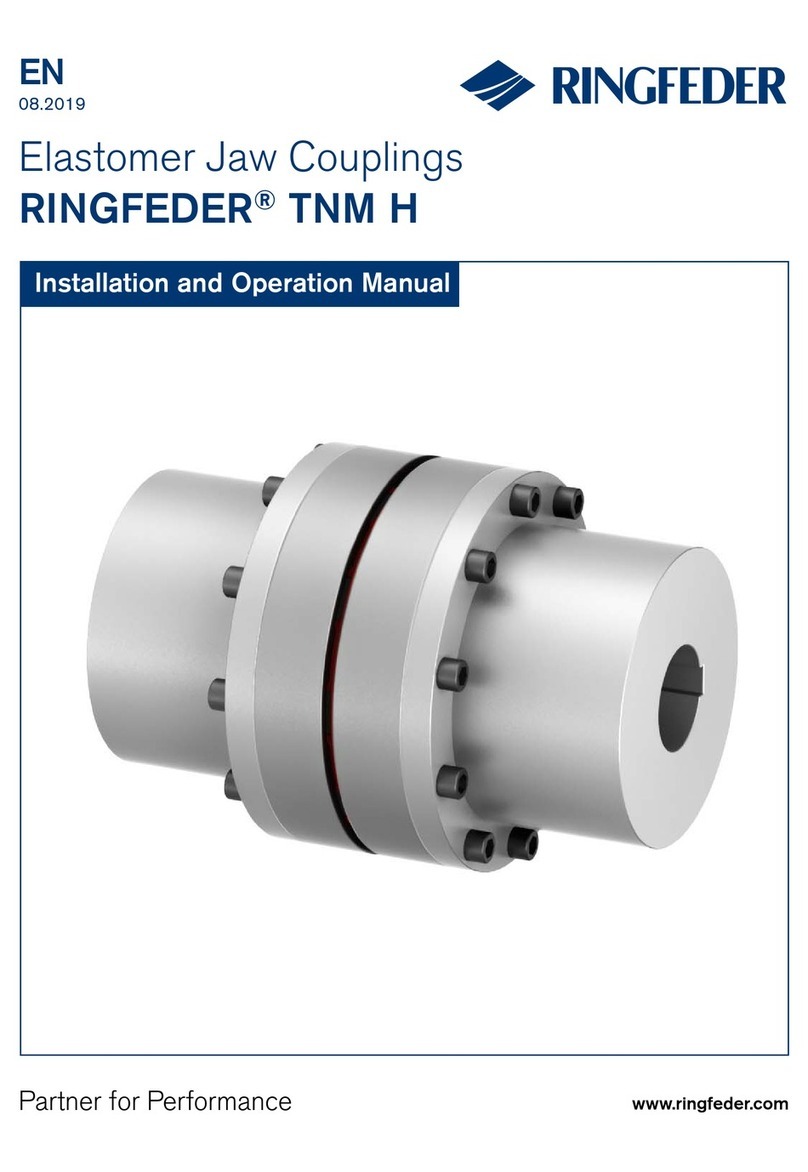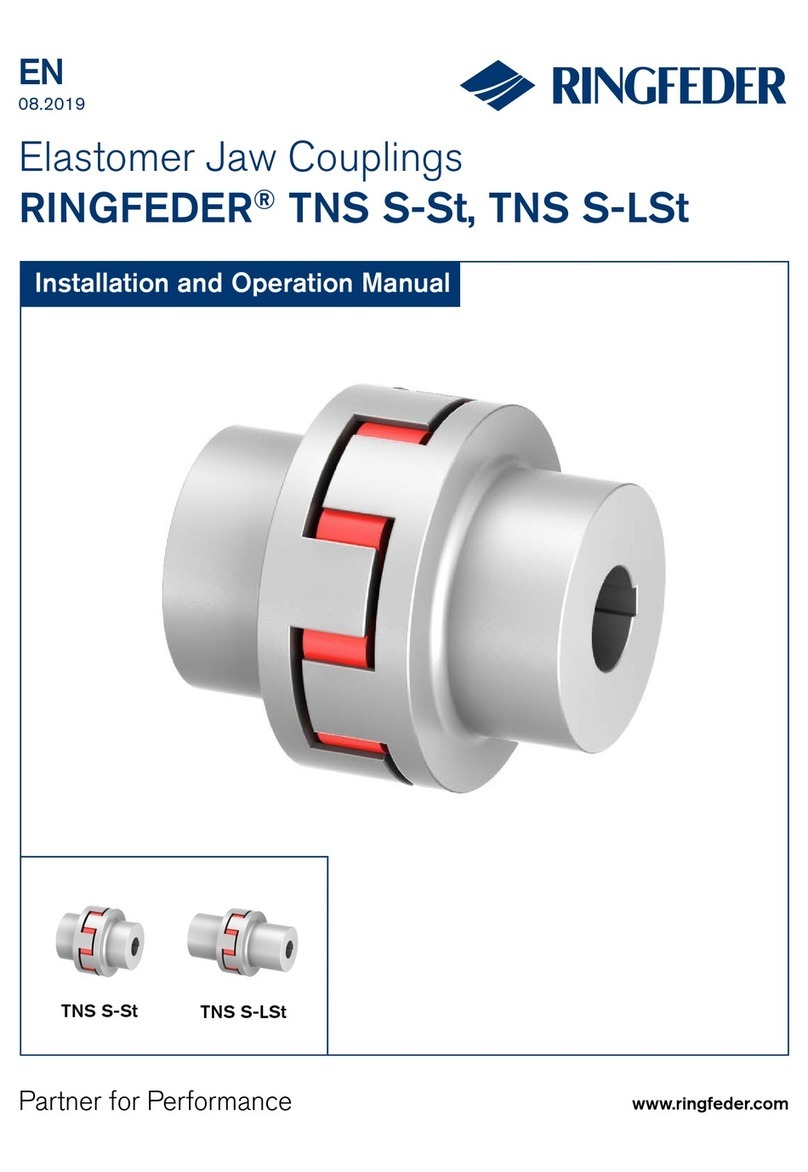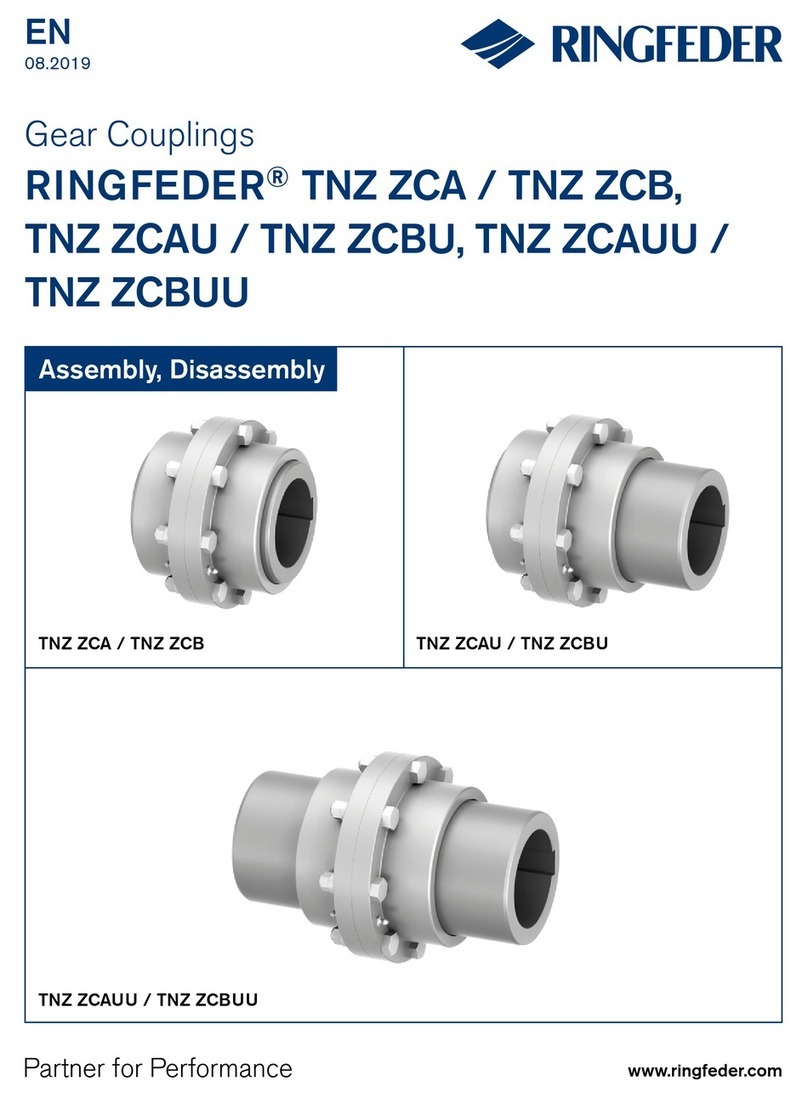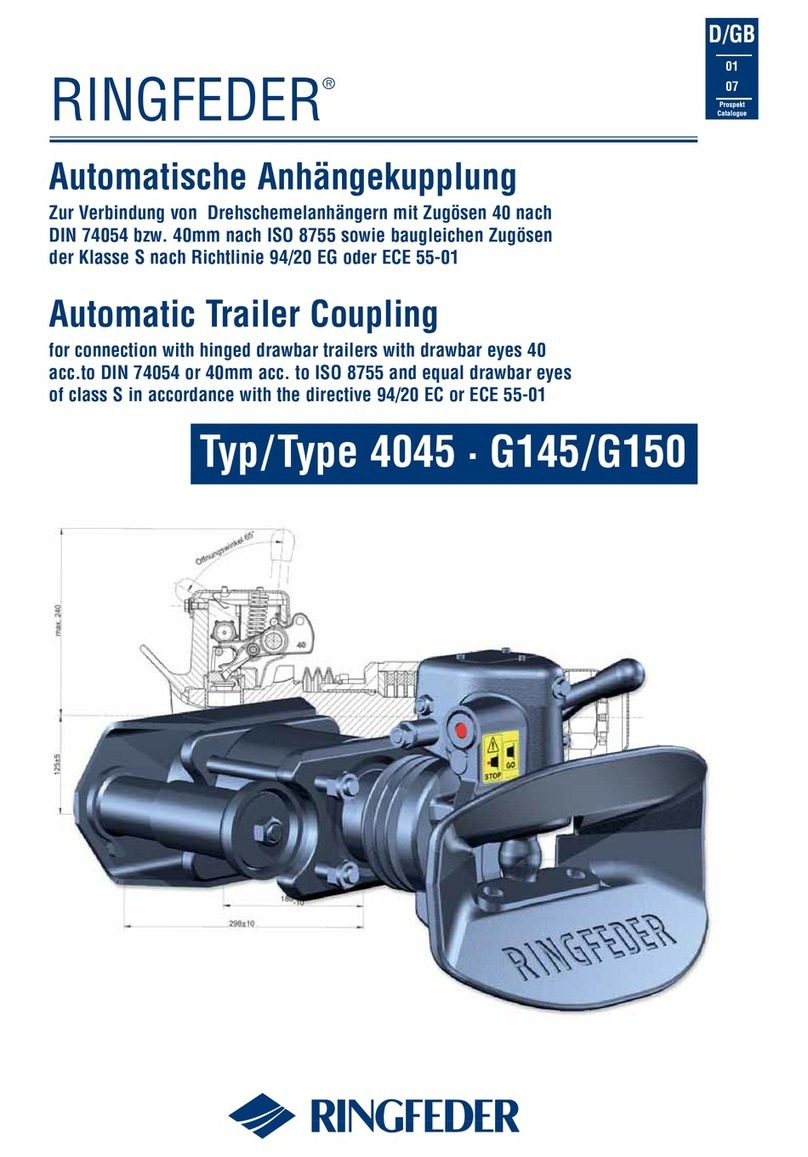
- 6 -
6 Technical data
Table 1 Technical data:
Size
TNM
E
TCnom
Pb72
[Nm]
TCpeak
Pb72
[Nm]
TCnom
Pb82
[Nm]
TCpeak
Pb82
[Nm]
nmax
[min-1]
d1
max
[mm]
d3
[mm]
d5
[mm]
lE
[mm]
LE
[mm]
S1
[mm]
m
unbored
[kg]
50 13 27 20 45 12500 19 33 50 25 52,0 2,0 0,4
67 22 45 35 75 10000 28 46 67 30 62,5 2,5 1,0
82 48 100 75 160 8000 32 53 82 40 83,0 3,0 1,8
97 96 200 150 340 7000 42 69 97 50 103,0 3,0 3,4
112 150 310 230 540 6000 48 79 112 60 123,5 3,5 5,3
128 250 500 380 860 5000 55 90 128 70 143,5 3,5 8,2
148 390 800 600 1350 4500 65 107 148 80 163,5 3,5 12,7
168 630 1300 980 2250 4000 75 124 168 90 183,5 3,5 19,3
194 1050 2000 1650 3630 3500 85 140 194 100 203,5 3,5 27,8
214 1500 3100 2400 5400 3000 95 157 214 110 224,0 4,0 38,2
240 2400 4800 3700 8650 2750 110 179 240 120 244,0 4,0 53,4
265 3700 7500 5800 13500 2500 120 198 265 140 285,5 5,5 75,0
295 4900 10000 7550 18000 2250 130 214 295 150 308,0 8,0 95,7
330 6400 13000 9900 23400 2000 150 248 330 160 328,0 8,0 132,9
370 8900 18200 14000 32750 1750 170 278 370 180 368,0 8,0 187,7
415 13200 27000 20500 49000 1500 190 315 415 200 408,0 8,0 259,3
480 18000 36000 28000 66000 1400 210 315 415 220 448,0 8,0 328,7
575 27000 54000 41000 97500 1200 230 350 575 240 488,0 8,0 466,9
The torque TCnom and TCpeak is valid for:
-Intermediate rings of Perbunan Pb72 and/or Pb82,
-Ambient temperatures of -40 °C to +60 °C,
-Operation within the stipulated alignment values.
During the layout of the coupling according to DIN 740 part 2 (or also Product Paper & Tech
Paper ”Elastomer Jaw Couplings“) different factors must be considered:
-with higher temperatures a corresponding temperature factor Sυ
-according to the starting frequency a starting factor Sz
-in dependence of the operating conditions an impact factor, SA, SL
With circumferential speeds of more than 22 m/s, we recommend to balance the coupling.
Fig. 2 RINGFEDER® TNM E
RINGFEDER® TNM E
BAWN 001-GBR-1
